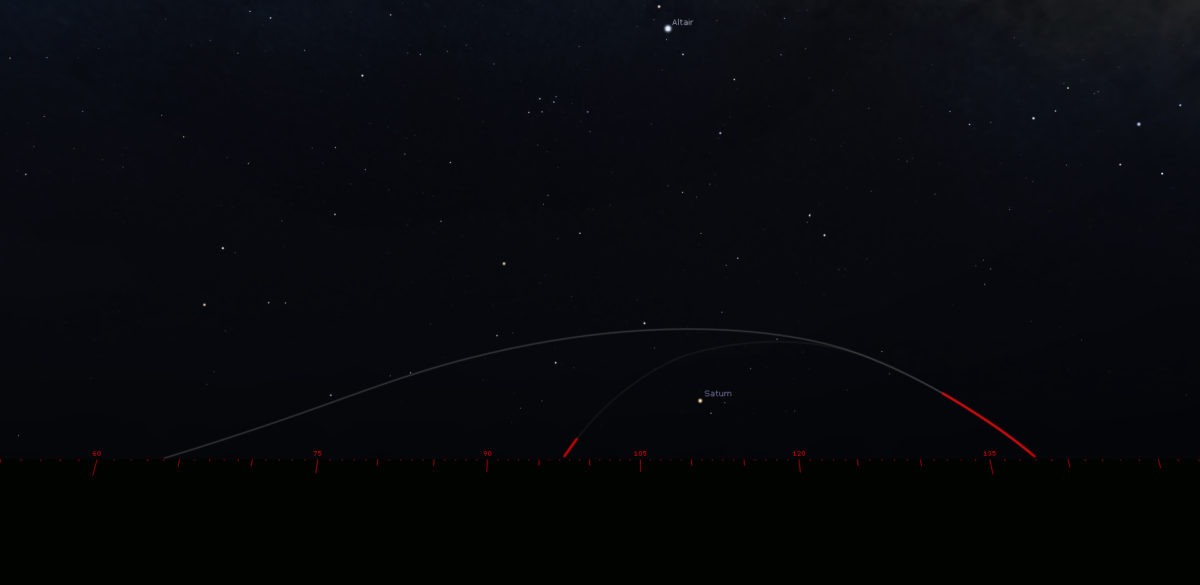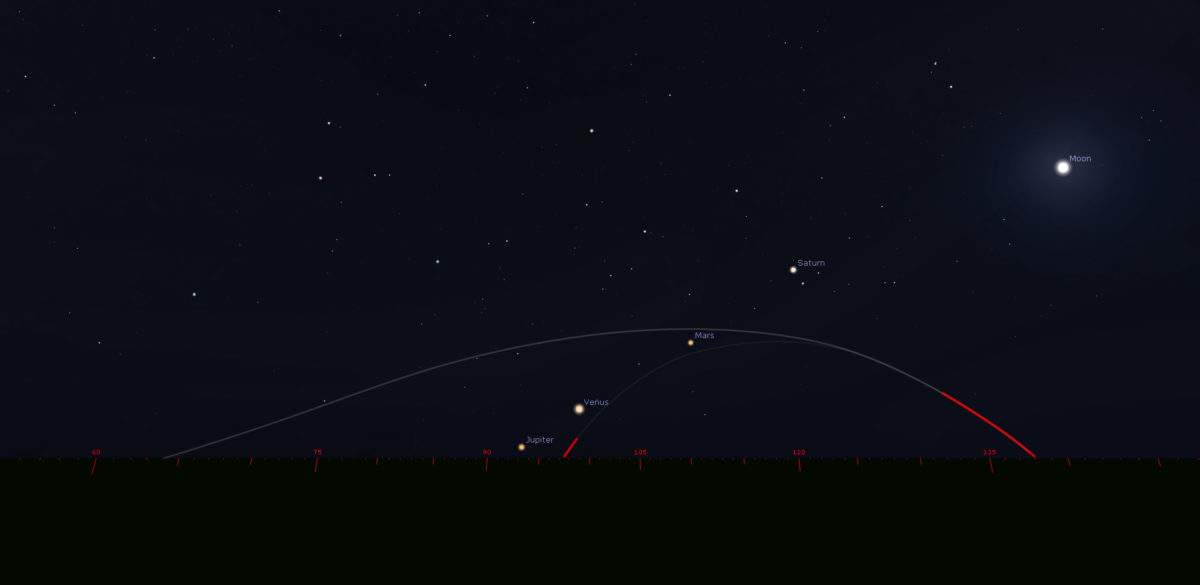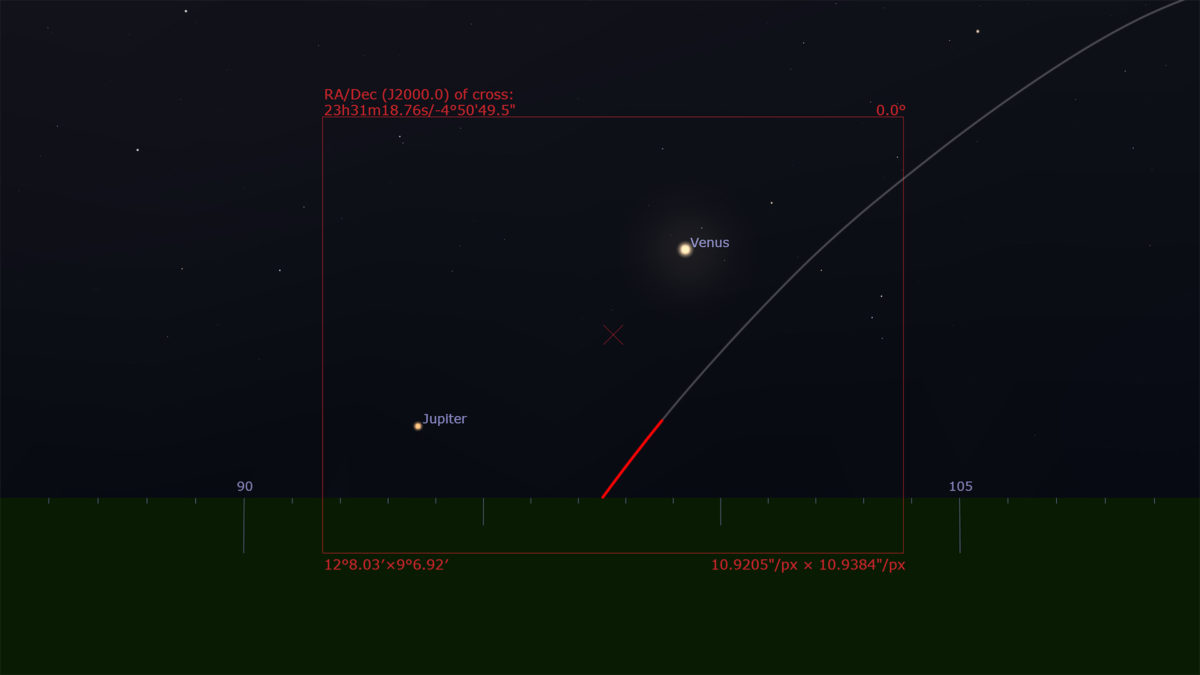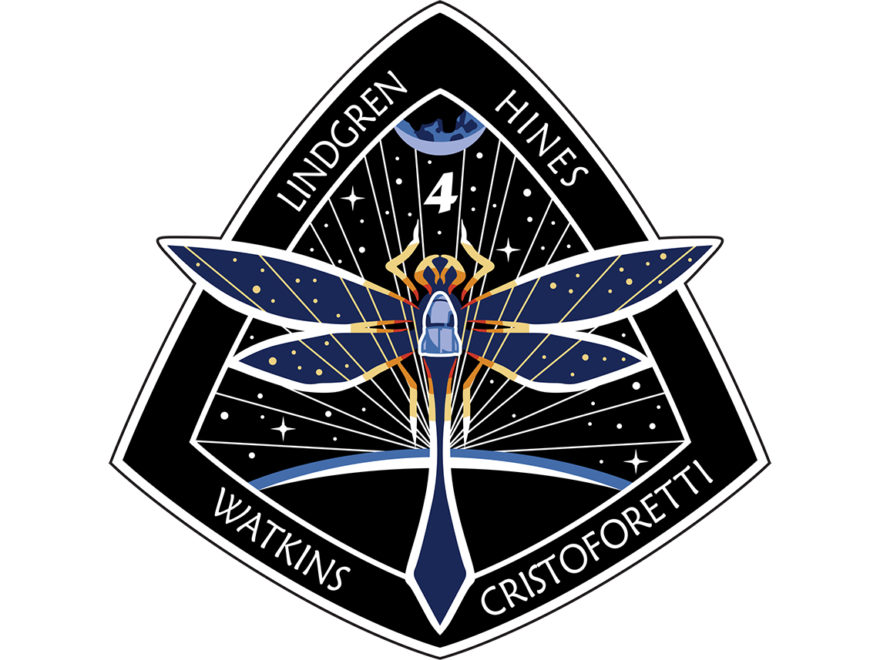Update: Launch postponed until Tuesday, April 26, at 4:15am ET.

The graphic above is for April 26. Below are the graphics for the original launch date on April 23.
Portions of the SpaceX Crew-4 launch from Kennedy Space Center should be visible from FDR State Park early Saturday morning. The launch is scheduled for 5:26am. According to data from the Alt-Az Generator at Flightclub.io, the Falcon 9 rocket will climb above the horizon at T+ 105 seconds (5:27:45). It will appear as a red flame until MECO (Main Engine Cut Off).

After MECO viewers with optical aids such as binoculars, wide field telescopes, and camera lenses should turn their attention to Mars. At T+ 295 seconds (5:30:55) the second stage may be visible as it passes 2° above Mars. Then at T+ 340 seconds (5:31:40) the first stage booster may be visible as it passes 1° below Mars (the booster should be pulsing its cold gas thrusters during this time). The red box below shows what the trajectories may look like through a full frame camera with a 300mm lens.

After that viewers should look toward Venus where the first stage booster will pass 3° to the right of the planet at T+ 420 seconds (5:33:00). Then at T+ 449 seconds (5:33:29) the booster entry burn will begin directly underneath Venus. This will appear as a flickering red light. The red box below shows what the trajectory may look like through a full frame camera with a 35mm lens.

Finally viewers should look to the northeast where the second stage may have climbed high enough to be illuminated by sunlight. If so it will be visible close to the horizon as a white light with a wedge shaped cloud behind it.

Bonus Views
If you are going to get up early to view this you might as well get up a little earlier to watch the International Space Station. It will exit from eclipse and become visible 17° above the southeastern horizon at 5:07:41 and remain visible for 5 minutes before it sinks below the northeastern horizon.
And after all of the spacecraft are gone there will be four planets lined up in the southeastern sky forming a straight line that points to the rising sun.

